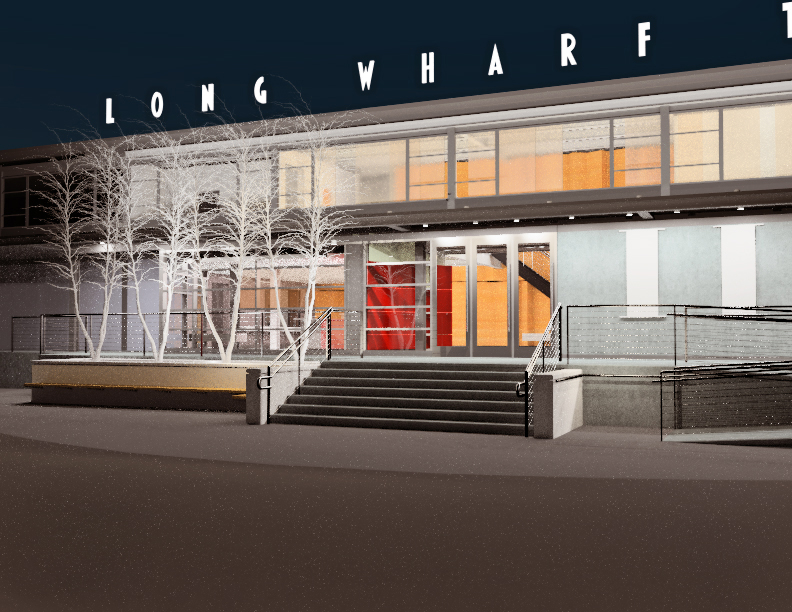The renovated Long Wharf Theatre has debuted with The Killing of Sister George, featuring a star turn by Kathleen Turner. The play seems a curious choice: an all-female play that recreates a somewhat dated view of lesbian relationships from the England of 1964. The original play, by Frank Marcus, has been adapted by Jeffrey Hatcher to lend a bit more nuance to the characters, but without altering its most troublesome fact: it’s set in a Britain still enamoured of its wireless broadcasts, which were full of sentimental evocations of a world where Sister George—the character Turner’s June Buckridge plays on a BBC Radio Programme—is a beacon of good works and selfless behaviour in a rural village. The humour of the play—which does not really aim at camp—relies upon a wry dryness in evoking British quirks that simply doesn’t translate well to an all-American cast in our day. Consequently, the play, as directed by Turner, feels a bit compromised, as if in search of a new unifying perspective that eludes it.
The point of the play, though, still manages to come through, once we get past the faux British mannerisms, and that point has to do with a tough-as-nails, matronly star getting her comeuppance from the BBC for fractious behavior and, what’s worse, losing her role as the beloved Sister George simply because the powers that be insist upon a change. The arbitrariness of fortune afflicts everyone, even prized actors—a lesson that may have attracted Turner to the part. Her version of June is brash and barking. Some of the best bits are delivered with the cutting swagger of Alan Bates at his most truculent, and the strength of the role is in the fact that June never drops her caustic assessment of the weaknesses of those around her. Despite the mawkishness of Sister George, the character that has been her claim to fame, June has no tolerance for the bathetic in day-to-day life.
The play is built upon the tension of liking someone we’d rather dislike—though the role never quite gets to the “love to hate” level, if only because Turner is so deft at exposing June’s insecurities. Her flat-mate and paramour, Alice, aka Childie (Clea Alsip), is a case in point: she’s a child-woman much older than she seems, preferring a somewhat anxious life as June’s whipping-girl and factotum to life fending for herself. The conceit that Marcus/Hatcher explore is that co-dependence is a compromise that will eventually suck away one’s life (Alice) or leave one exposed to an emotional comeuppance (June). The two play off each other well, with Alsip’s Childie obviously cannier than June gives her credit for; blinded by Childie’s willingness to be an abused “bottom” to her own bullying “top,” June little suspects her paramour may outgrow her.
The most affecting moment from the point of view of the love story between June and Childie is when the two, decked out for a fancy dress ball, cavort in the guise of Laurel and Hardy. We glimpse not only archetypes for their love-hate relationship, but also the camaraderie of their life together. Of course, it’s shortly after this that things take a turn for the worse.
The villain in the piece, from June’s point of view, is Mrs. Mercy Croft (Betsy Aidem, making the most of it), a hatchet-woman of the BBC—and also a radio personality in her own right for her broadcast bromides—whose clipped politesse is anathema to June, and who manages to woo Childie with flattery of her literary gifts. One suspects that Marcus has seen this sort of thing enough—a younger prize up for grabs between wheedling elders—to give it the right tone of arch inevitability. The satisfaction of the play, in the end, is in seeing June not cave-in. Turner—as director and actress—has the guts to let the play maintain the principles of June’s scorn.
The set and costumes—as is generally the case when Long Wharf goes for ‘period’—are quite good. June and Childie live in a kind of over-stuffed world where the older woman’s trophies and plaques vie for space with the younger woman’s collection of Victorian dolls (June likes to threaten horrible fates for one called Emmeline whenever Childie gets out of line). Costuming for Turner is particularly appropriate, as she sets off twinges of memory recalling Simone Signoret in the Sixties.
The Long Wharf continues to develop its penchant for middling comedies that might be spinnable into something more. Here, the sadomasochistic touches are neither campy nor creepy enough to give us much purchase on what Marcus had in mind. The Killing of Sister George is not entirely bloodless—there’s a great speech from Mercy, late in the play, about the BBC’s wisdom in choosing its sacrificial victims, and one imagines that anyone whose career is not immune to the whims of management will identify with June’s final utterances. Bracing and brash, and never bathetic, Turner’s Sister George is worth catching.
The Killing of Sister George has made a “killing” in selling more tickets on one day (November 26th, Cyber Monday) than at any time in the Long Wharf’s history. A star gracing the stage at the Long Wharf's newly renovated C. Newton Schenck Theatre is reason enough, perhaps, for the flood of interest. The seating is greatly improved and the lobby and façade are more graceful, but Stage II also hit a new record with Satchmo at the Waldorf in the fall. Unlike certain larger venues in the vicinity, the Long Wharf is more than ever the place—on both stages—to see great acting up close and comfortably.
Kathleen Turner in The Killing of Sister George By Frank Marcus Adapted by Jeffrey Hatcher Directed by Kathleen Turner
Set Design: Allen Moyer; Costume Design: Jane Greenwood; Lighting Design: John Lasiter; Sound Design/Composer: John Gromada; Miss Turner Wig Design: Paul Huntley; Dialect Coach: Deborah Hecht; Stage Manager: Bryce McDonald; Assistant Stage Manager: Amy Patricia Stern; Casting: Pat McCorkle Casting, Ltd.
Photographs by T. Charles Erickson, courtesy of Long Wharf Theatre
Long Wharf Theatre November 28-December 23, 2012





